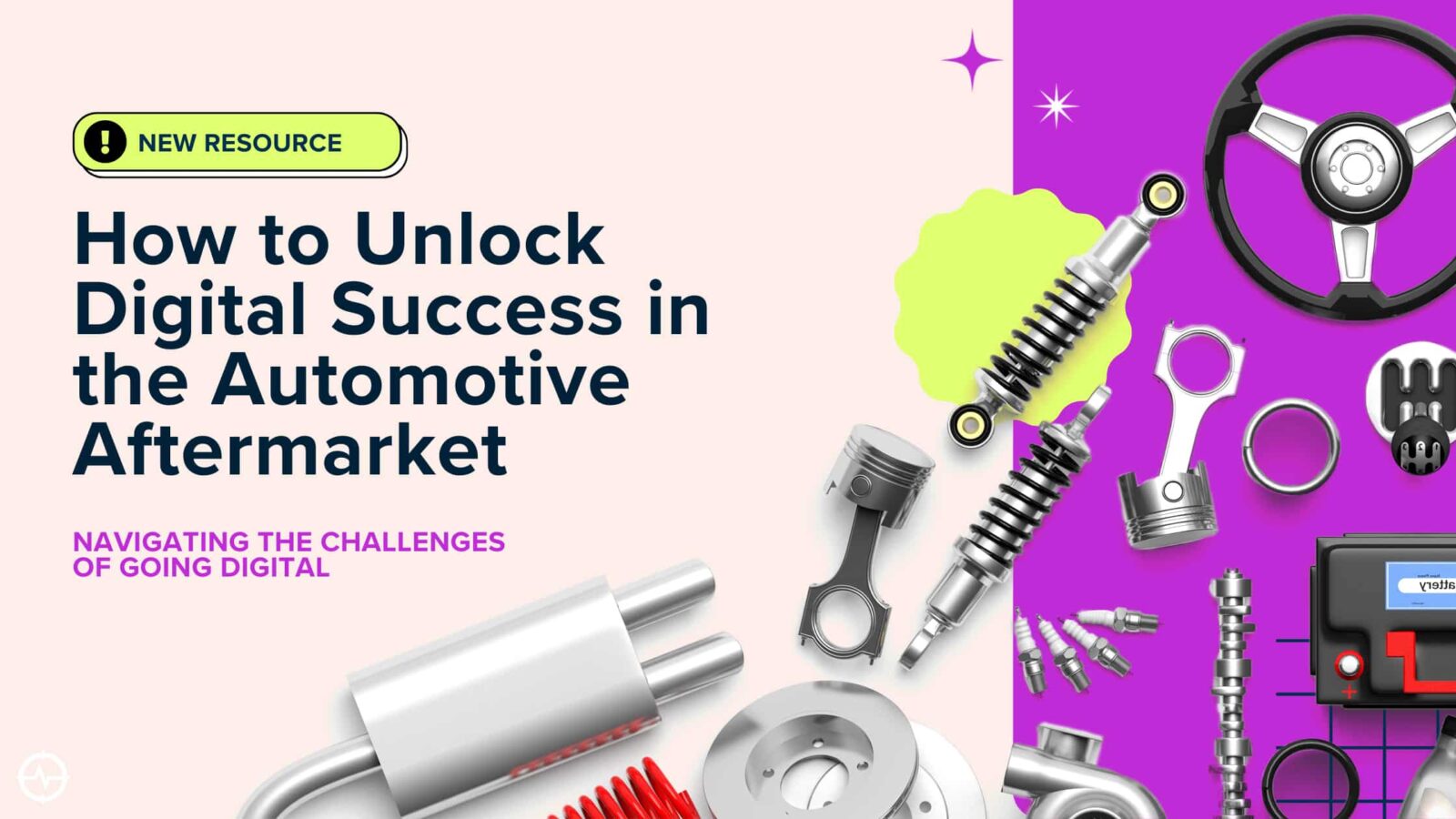The automotive aftermarket is experiencing a digital revolution, with ECommerce poised to become the primary battleground for market share. As consumer preferences shift towards online shopping and DIY solutions, automotive aftermarket companies face a unique set of challenges and opportunities.
In light of these challenges, the Content Status and Pivotree teams partnered up this year to gather data from eight product categories, seven retailers, and more than twelve thousand product pages to compile our 3rd Annual Automotive Aftermarket Digital Health Report. The report evaluates how companies fare against basic content requirements, taxonomy best practices, and other critical product content elements.
Read on to understand the intricacies of the automotive aftermarket ECommerce space, uncover valuable content insights and explore strategies to thrive and win online.
Understanding the Automotive Aftermarket
Recent forecasts paint a promising picture for the automotive aftermarket ECommerce sector, with projected growth rates soaring at a compound annual rate of 17.5%, catapulting the market to a staggering $164.7 billion by 2030. This meteoric rise is fueled by a convergence of factors, including escalating digital initiatives, the proliferation of customer-driven DIY trends, and the relentless expansion of automobile production.
Before diving into our report’s findings and key insights, let’s explore the challenges facing the automotive aftermarket industry. By understanding the market and its present challenges, retailers can better respond with data-driven, high-converting product content.
Challenges Facing the Automotive Aftermarket ECommerce Space
While the potential for growth is undeniable, navigating the automotive aftermarket ECommerce space is not without its challenges. Here are some key hurdles that businesses must address to thrive in this competitive arena:
 An Oversaturated Market
An Oversaturated Market
The expansion of the digital shelf has increased the automotive aftermarket competition more rapidly than ever. Businesses must establish themselves in an oversaturated market and differentiate themselves from brands competing for the same customer base.
Optimizing product detail pages (PDPs) is crucial to standing out in a sea of content. When brands and sellers understand how to effectively structure PDPs and the type of content to include, they increase visibility, traffic, and sales to an audience ready to purchase.
 Managing a Complex Catalog
Managing a Complex Catalog
The automotive aftermarket includes many products, a few of which we’ll cover below. From engine components to accessories and everything in between: there’s a buyer for these products within the industry.
Aftermarket retailers compile massive catalogs of their inventories. And because auto parts require structured information across multiple attributes, getting catalog content right is essential. For example, shoppers aren’t simply looking for an oil filter. They’re looking for a filter that matches a vehicle’s specific make, model, and year. This information must be accurate for consumers to find the parts they need the first time around.
Managing massive catalogs poses significant challenges for players in the automotive aftermarket space. If product data isn’t accurate or consistent, retailers lose traffic and trust, which means they also lose sales.
 Inventory Management
Inventory Management
Along with managing a comprehensive catalog, retailers must stay on top of inventory management. When shoppers click “purchase” on a product, they rightly assume the item is available and will be shipped to their door. When inventory isn’t properly managed and accounted for, retailers don’t know what they do or don’t have. This leads to over-ordering and under-ordering, wasting time, warehouse space, and money. If a seller has run out of a product but doesn’t note that information on the product page, the customer has a negative experience, likely leading them to shop elsewhere.
Proper inventory management ensures calculated and intentional resource spending and appropriate stock to meet the consumer’s needs. Retailers lose money, time, and reputation without an inventory management strategy.
 Product Discovery and Search
Product Discovery and Search
The sheer breadth of product offerings within the automotive aftermarket can overwhelm consumers, hindering their ability to find the right products for their needs. An expansive product catalog, incorrect inventory information, and unstructured product data are common challenges, contributing to the more significant obstacle of cumbersome product discovery and search.
Implementing a robust Product Information Management (PIM) system streamlines product discovery, ensuring that customers can swiftly locate and purchase desired items. Optimizing product detail pages (PDPs) for SEO is also paramount to achieving discoverability and beating competitors.
 Shipping and Tracking
Shipping and Tracking
Amazon and Walmart have changed the game regarding shipping and delivery. The automotive aftermarket industry now competes against these standards with products that are difficult or impossible to ship quickly and often require specialized logistics.
Today’s consumer expects transparency, including in shipping and delivery. Providing accurate shipping information, including expected delivery dates and tracking details, fosters trust and confidence among customers, enhancing the overall shopping experience.
 Poor Product Page Content
Poor Product Page Content
A retailer’s product content strategy determines visibility, engagement, traffic, and sales. Product detail pages provide consumers –– both retail and wholesale –– with the information they need to find the product and determine if it’s the item they’re looking for.
Retailers must prioritize the creation of informative, accurate, and compelling product detail pages to maximize visibility and drive sales. Without optimized PDPs, retailers miss the algorithmic mark and lose sales to competitors that have invested more resources into this arm of their marketing strategy.
Automotive Aftermarket Digital Health Report Overview
The above challenges are stalling growth and revenue streams for automotive aftermarket retailers. This collaborative Automotive Aftermarket Digital Health Report 2024 provides valuable insights into how you stack up against your competitors and identifies actionable steps to improve your product data.
We analyzed over twelve thousand product pages in the top eight product part categories across seven retailers to understand how companies are faring against basic content requirements and critical elements of the product page. Here are the key results from this year’s Automotive Aftermarket Digital Health Report:
- Average Content Health: A modest 2.8 out of 5.0 across all sites.
- Image Assets: 66% of products have four or fewer image assets.
- 360° Spin Assets: 82% of products do not include these crucial assets.
- Video Assets: Only 18% of products are equipped with video content.
While the road ahead seems challenging, businesses equipped with the right strategies and insights can navigate the automotive aftermarket ECommerce space with confidence and capitalize on the myriad opportunities to quickly improve. Here are our top recommendations:
- Streamline product data acquisition and enrichment to overcome industry challenges and achieve revenue objectives.
- Implement a robust content health assessment framework to standardize, evaluate and improve the quality of your product content.
- Use a consistent grading methodology to ensure data accuracy and reliability, facilitating meaningful comparisons across different ECommerce platforms.
- Prioritize basic content requirements, including titles, descriptions, bullets, images, and videos to enhance product visibility and drive sales.
There is so much more from our research that we can’t fit into this post! To see what’s happening in greater detail, including results for each retailer and the top product part categories in the Automotive Aftermarket, download the report.
Get a Free Digital Health Assessment with Content Status and Pivotree
Your product pages are full of untapped opportunities to drive impactful growth. Optimizing your product content allows you to:
- Boost findability
- Improve brand consistency
- Reduce returns
- Increase sales
Content Status and Pivotree have the strategic expertise and tools you need to build product pages that convert. We give you insights into the health of your content and how you can improve performance before you click publish.
Don’t waste time on content that doesn’t measure up. Sign up today for your free digital health assessment! We’ll show you quick wins to optimize your content, improve your brand reputation, and boost sales.
Love reading, keep reading
Get the latest articles delivered directly to your inbox!


